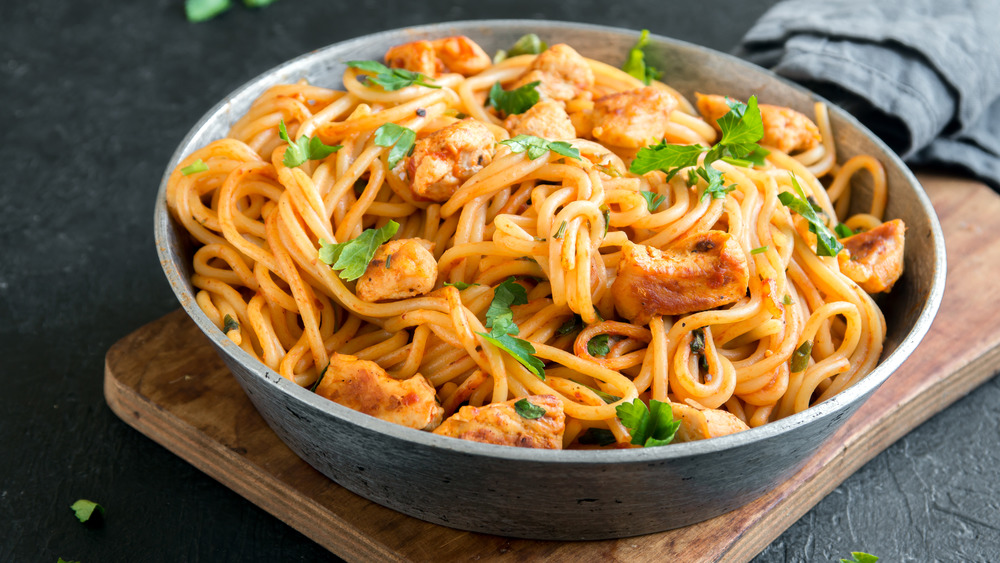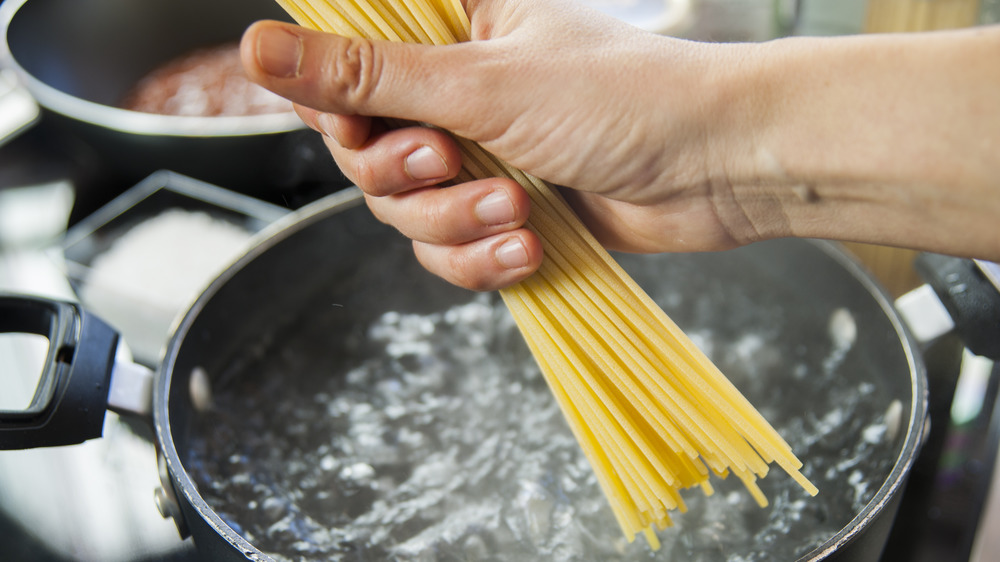This Is Why You Should Finish Cooking Pasta In A Pan
Pasta is satisfying, simple, and remarkably versatile. It can be anything from an all day affair on a Sunday to a super-quick weeknight meal. It can be gluten-free, dairy-free, vegan, vegetarian, or a carnivore's dream. You can opt for simple aglio e olio, creamy vodka, deeply flavored Bolognese, or a slew of others. A super simple pasta preparation is heaping a spoonful (or a few) of sauce on top of hot, freshly cooked noodles. While this is always delicious, it isn't the ideal way to make pasta. There is one component of pasta cookery that is non-negotiable: always finish cooking the pasta in the sauce.
As The Daily Meal states, "Drain your pasta when it is still a minute or two away from al dente perfection and let it finish cooking in the sauce." There are multiple reasons for this: the pasta will better absorb the sauce, the flavor will be more pronounced, and the sauce and the pasta will "marry" more fully this way than by merely topping off a bowl of plain pasta with some sauce. Furthermore, PureWow notes the importance of utilizing starchy and salty pasta water "which will help the sauce to cling to the pasta while also keeping it the right consistency." Next time you're cooking pasta, make sure not to just drain your pasta and let all of that valuable starchy water literally go down the drain — just scoop a cup or so out of the pasta pot before draining, and add it in increments.
Top tips for cooking pasta
There are also some additional tips to keep in mind for perfect pasta cookery. According to Smithsonian Magazine: use a large pot, salt your water until it 'tastes like the sea,' make sure it comes to a rolling boil, don't add oil, and don't rinse your cooked pasta once it's drained. Also be sure to cook pasta to al dente and also note that varying noodles and shapes have different cook times.
That being said, The Daily Meal notes that almost every shape should be finished within 10 minutes. Kitchn notes that tongs are an ideal tool for tossing pasta and that pasta shouldn't be limited to just noodles and sauce — almost any vegetable is delicious when added to a pasta dish. It should also be acknowledged that if you're a meat-eater, then pancetta, beef, meatball, sausages, braciole, etc. are also more than welcome to join the party! Lastly, a glug of high-quality extra virgin olive oil, a touch of butter, and of course a heaping pile of grated cheese certainly wouldn't hurt when putting the finishing touches on your pasta either.
Next time you're about to whip up some pasta, use these tips and you'll be incredibly satisfied. These are such simple steps, but you'll be bowled over (pun intended) by the magic that occurs with just these minor changes. No need to go out for Italian — you'll have restaurant-quality pasta right in your own kitchen.

